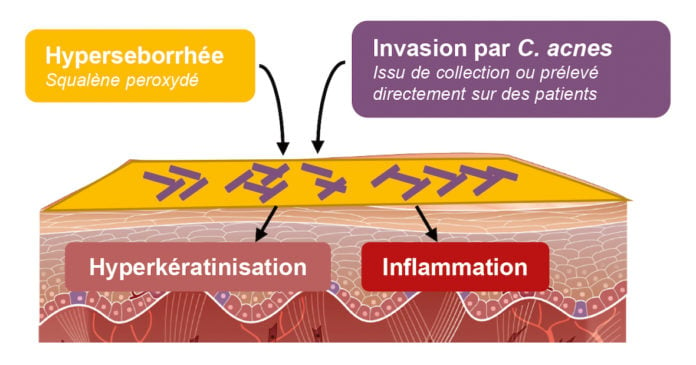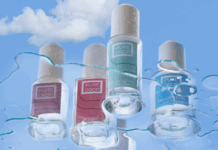Silab Softcare's advanced research teams have developed a 3D model of reconstructed epidermis that mimics in vitro acneic skin. The characterization of this model has just been published by the scientific journal Experimental Dermatology*.
Acne is an inflammatory skin disease involving four essential components: hyperseborrhea combined with a change in sebum composition, colonization by Cutibacterium (C.) acnes and in particular the virulent phylotype IA1, hyperkeratinization and secreted inflammation.
Most 3D models mimicking acneic skin independently use hyperseborrhea or invasion by C. acnes to induce the different characteristics of acneic skin. However, as these two factors are dependent on each other in the early stages of the pathology, the aim of this study was to develop a 3D model combining sebum alteration and invasion by C. acnes.
Thus, a reconstructed epidermis was treated with peroxidized squalene and the IA1 phylotype of C. acnesThe combination of these two factors allowed the induction of acne-related keratinocyte responses such as hyperkeratinization and inflammation. The combination of these two factors allowed the induction of keratinocyte responses related to acne such as hyperkeratinization and inflammation, and thus obtaining a model with all the characteristics of acneic skin.
"The extensive characterization of this new model in vitro has proven that it is fully adapted to mimic acne-prone skin and serve as a screening tool for the development of anti-acne treatments.says Marine Laclaverie, Innovation Project Manager in vitroSilab.
Acnesium, the daily care for acne-prone skin
The 3D model obtained during this study has allowed to demonstrate the pharmacological activities of Acnesium, a natural active ingredient developed by Silab Softcare to treat the clinical signs of mild to moderate acne in adults.
Produced from immature pomegranate bark, Acnesium restores homeostasis to acne-prone skin by targeting the four major components of this pathophysiology: it normalizes sebaceous gland activity, controls colonization by the IA1 phylotype of C. acnesIt has a keratolytic action and reduces inflammation. Combining speed of action and effectiveness, this high-tolerance treatment improves the general appearance of the skin and thus the quality of life of patients.
* Laclaverie et al, Development and characterization of a 3D in vitro model mimicking acneic skin, Experimental Dermatology (https://doi.org/10.1111/exd.14268) Experimental Dermatology; Impact factor 3.368; Ranking 15/146 in Dermatology








